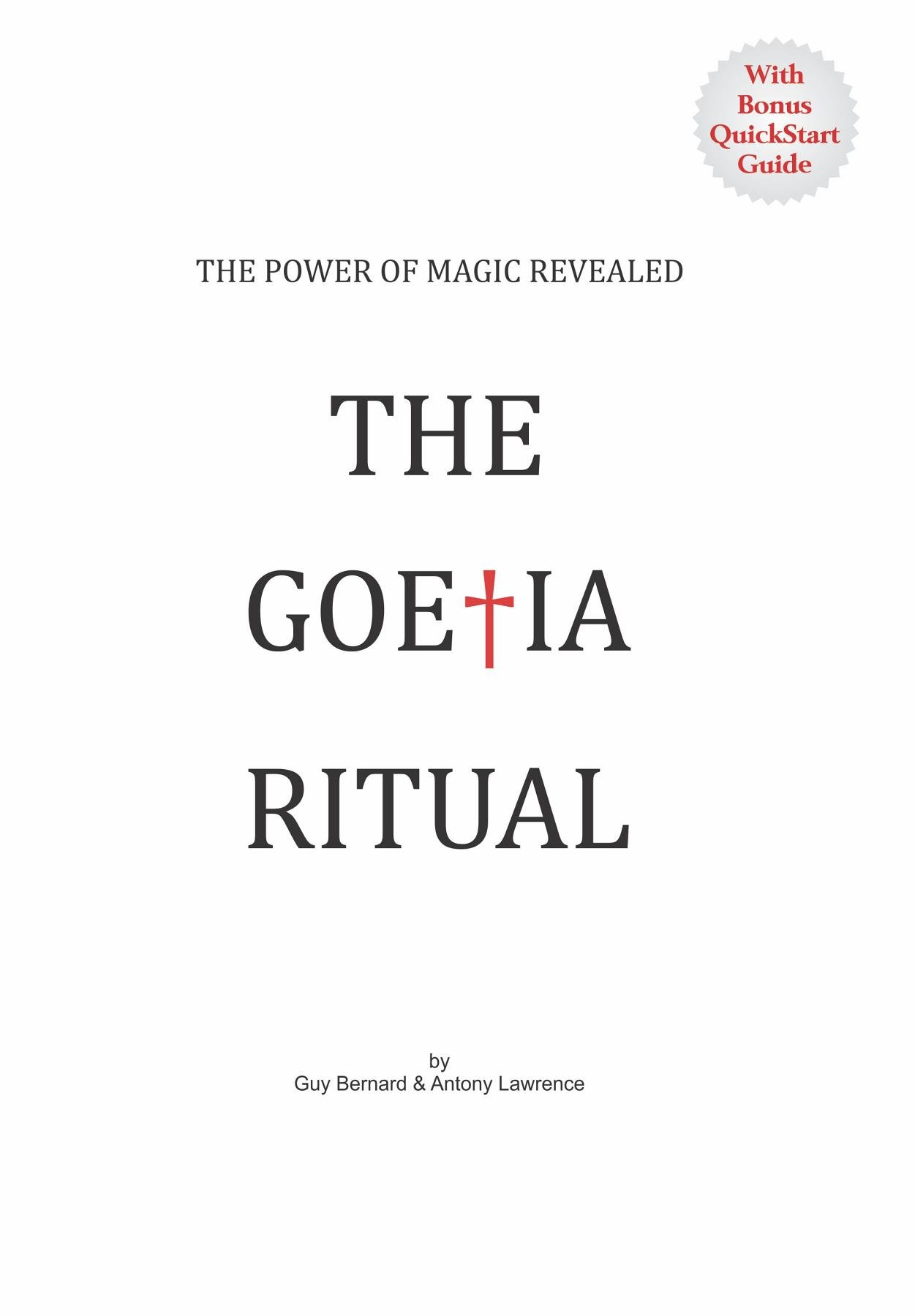
The Goetia Ritual | Free Book

This book came about upon a request made by a friend, on how to perform a demon binding operation (or evocation), which is also known by the Ancient Greek derived name “Goetia.” This friend had read Crowley’s 1904 co-edited publication The Book of the Goetia of Solomon the King; but was struggling with the concepts and with its magical operations. At first, as I have a background in medieval and religious history, I believed that the task would be a simple one, that is, to simply unpack Crowley’s work with the aim of interpreting and simplifying it for my novice friend. However, Crowley’s work itself became a challenge to grasp; thus sparked an interest within me, and started a journey with its own discovery. Along the way I teamed-up with Antony Lawrence who brought his background in graphics and design to this book’s artwork, and also contributed to its research and writing.
In our research we found that demon binding has a long history and many traditions. The tradition that Crowley’s book fell within the Western magic esoteric tradition: the Western Qabalah; kept alive mainly through magical manuscripts known as grimoires. In their original medieval form these were hand-written texts for professional magicians. The grimoires only contained the most essential information, as much was left out. In short, the grimoires in their raw state were incomplete. When the printing revolution took hold at the end of the medieval period, the grimoires resurfaced as published texts. However, these published grimoires remained incomplete and because of this, their magic maintained its mysterious quality. Over time they gained a reputation for being dark and dangerous; but this was more to do with attempted demon-binding with an incomplete magical technology, making the risks greater than would otherwise be if it were complete.
Crowley was aware of this hazard. In his co-edited publication on the Goetia, he not only relied on original manuscripts, but also included a vital operation for the invocation of the Divine. Moreover, while Crowley added much he also was careful not to offer complete operations; as he sought to separate the serious minded from dabblers. Given the value of Crowley’s research, his Goetia was quickly plagiarized by others. Not surprisingly, Crowley did not publish another work of this kind again. Unfortunately, the many publications, since Crowley’s seminal 1904 Goetia, have added little to make the work complete and easily accessible.
In writing our book we have approached Goetia with Crowley’s zeal for research, basing our work on credible sources, and sought to complete the task that Crowley started. To do this, we have broken the Goetia down into its classic operations, with each operation given an introductory chapter that explains its purpose. Maintaining the work's authenticity to its magic Qabalah tradition, Latin headings are used for each operation. This allows each operation to be easily identified and differentiated. In brief, these are the Consecratio, Invocatio, Evocatio, Ligatio, and the Licentia. The Consecratio provides the necessary litanies for sacralising yourself, your ritual space, and all material things required. Following this is the Invocatio, where you invoke the Divine; and open a dimensional portal to evoke the demon. The Evocatio provides you with the essential Evocatory Calls for evoking the demon. On making contact, the Ligatio arms you with the binding litanies to bind the demon to your specific intent. Once this is effected, the ritual is completed with the Licentia, where you perform banishing litanies, close the dimensional portal, and finally re-cleanse your ritual space.
As a bonus this is brought together in a user guide called, QuickStart Goetia Ritual, which is located at the back of this book.
- Title: The Goetia Ritual | Free Book
- Author: Steven
- Created at : 2024-10-21 17:31:39
- Updated at : 2024-10-27 01:44:36
- Link: https://novels-ebooks.techidaily.com/209859366-9780648121619-the-goetia-ritual/
- License: This work is licensed under CC BY-NC-SA 4.0.
